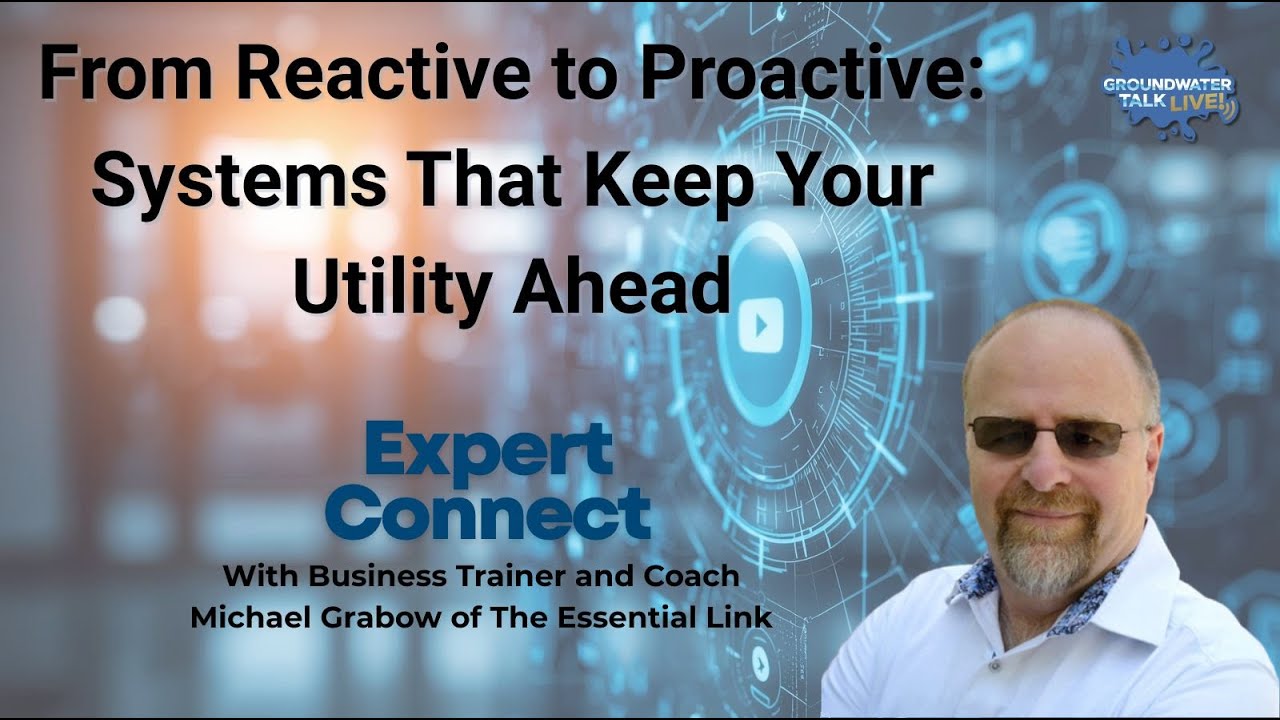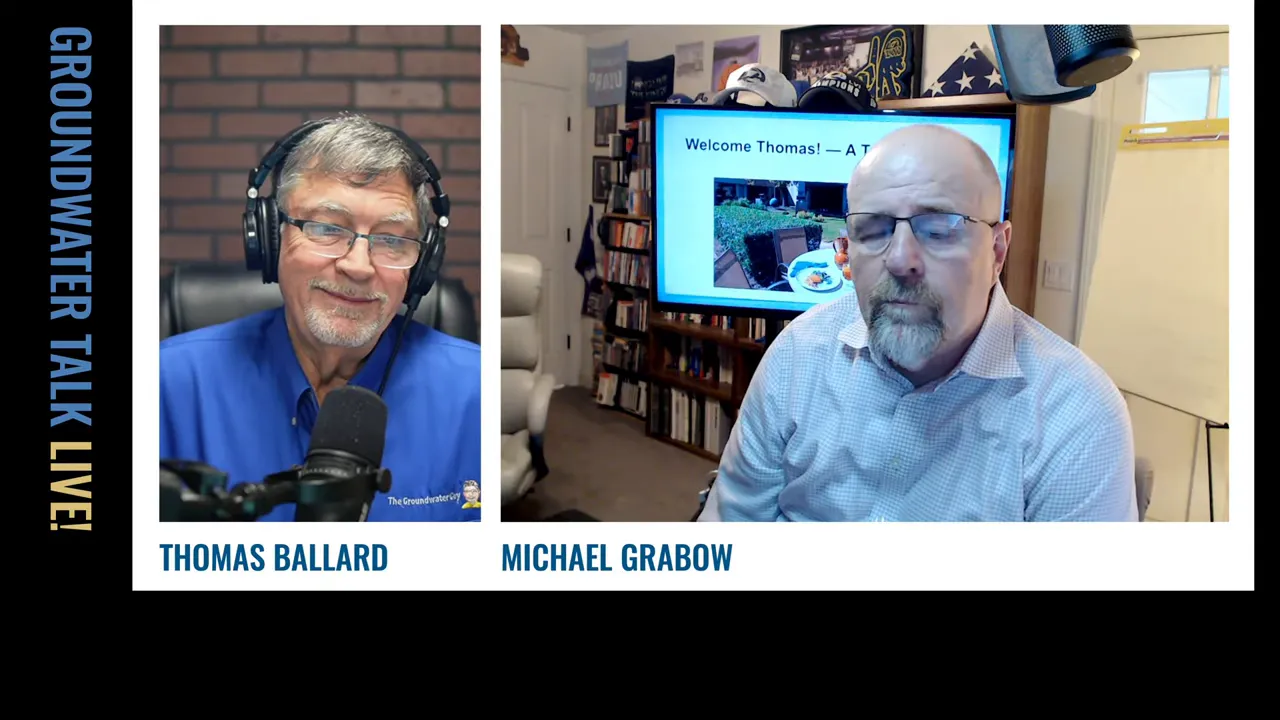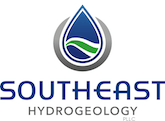
Tom: Mike, tell us a little about your background and why systems and processes matter so much when moving small water utilities into the digital age.
Mike: I have been a training professional for more than four decades, and I coach and consult with organizations on how to put systems and processes in place so people can do their best work. My career started unexpectedly in the Air Force when a medical issue nudged me from law enforcement into training. I learned one lesson very early: follow a consistent process and you can scale capability quickly.
That lesson came to life when I helped create the training program for the KC-10 tanker. We designed training across 26 maintenance shops by using a repeatable process. Years later higher headquarters called it the best training program they had seen. I didn’t invent anything magical — I followed the system. That experience taught me projects and processes set people up for success.
For small water systems, that means taking what might be a paper-heavy, reactive culture and turning it into one that is deliberate, measurable, and proactive. It is not about fancy software first. It is about identifying what matters, documenting it, measuring it, and moving in small, iterative steps so people actually adopt the change.
Tom: Why should a small, resource-constrained water utility even attempt a digital transformation?
Mike: The short answers are better, faster, cheaper. But let me unpack that. Small water utilities are quasi-public, highly regulated, and often constrained by capital and staff. Yet those constraints are exactly why they benefit from systems that streamline work and reduce emergency cost.
When everything is working well, water flows. The same goes for technology and processes: when they are well designed, work flows. The goal is to create systems that make routine tasks quick and predictable, minimize failures, and provide timely information to make decisions. Imagine going from “we ran to failure and fixed it” to “we detect signs that point to failure and act on them.” That shift reduces overtime, reduces surprise capital expenses, lowers customer complaints, and stabilizes rates.
Another reason is that the technology we need is now accessible. You do not have to buy an enterprise package to get started. Basic digital tools — shared documents, spreadsheets, simple dashboards — can deliver immediate value. The key is to start with the why, not the how. Define why you want to change: faster service, fewer leaks, better data for the board. When the why is clear, the what and the how fall into place.
Tom: Where do you recommend a utility start? What are the first practical steps?
Mike: Start by identifying your core competencies and critical processes. Put your team together — even if that team is three people — and go on a fact-finding mission. Make a simple list of the essential processes: customer complaints routing, leak detection, pressure monitoring, asset maintenance, billing reconciliation, regulatory reporting. It sounds old school, but write it down. It’s the foundation.
Then apply a positive reframe. Instead of obsessing on what’s broken, name the problem, flip it, and design what the positive opposite looks like. For example, if the current state is “paper-based complaints take days to route,” the positive opposite might be “customer complaints are logged instantly and show up on an operations dashboard within minutes.” Once you have that image, you can work backward to define the actions, behaviors, and measurements that make that positive opposite inevitable.
Importantly, lean into small experiments. You do not have to convert the entire organization overnight. Break projects into bite-sized chunks: what five things can we accomplish this week or month? A five-step, focused approach gives you agility and keeps the team engaged.

Tom: Resistance to change is real in small utilities. How do you overcome it?
Mike: Resistance often lives in our heads more than in reality. If you tell yourself you cannot do something, you will find reasons to be right. So step one is mental: choose curiosity over fear. Ask better questions. Questions open possibilities; answers tend to close them.
From a practical standpoint, you must create a compelling why. People are more willing to change when they see the direct benefit — either to the customer, to operational ease, or to rate stability. Use debate-making, not top-down decision-making. Bring the team into a structured debate where options are discussed openly. When teams defend and then swap positions, they start to see pros and cons on both sides and commit to the outcome. People buy into what they help create.
Also respect multiple hats. In small water utilities people perform many different roles. Use that nimbleness to your advantage: huddle frequently, communicate clearly, and keep tasks small. No giant mandates; instead create fast feedback cycles that let people test ideas and iterate.
Tom: A common problem is data silos. How do you break them down in a small operation?
Mike: Data silos — customer service records on one shelf, billing on another, operations in different binders — are the enemy of speed and insight. The cure starts with cross-functional communication and a lightweight information-sharing plan.
Implement a simple communication plan: who needs what information, at what frequency, in what format, and how will it escalate? For many utilities a Monday/Wednesday/Friday stand-up or a short shared page in a cloud notebook can work wonders. OneNote, Google Docs, or a shared spreadsheet are enough to start. Put the customer complaint log, pressure readings, and recent field notes into a single shared place so everyone sees the same picture.
When customer service and operations talk, you can overlay complaints on your GIS and see clusters that point to a valve, a pressure zone, or a failing asset. That is how you move from anecdote to evidence, and you can then target fixes rather than chasing symptoms.
Tom: How should a small utility handle Standard Operating Procedures and knowledge capture when people retire?
Mike: We are facing a silver tsunami: long-tenured staff are retiring and taking institutional knowledge with them. If you do not capture that knowledge in usable formats, you will be less resilient.
Standard Operating Procedures remain essential, but they must be practical and measurable. Not everything needs an SOP. Focus on core and critical processes, especially those that would create operational risk if only one person knows them.
Write SOPs for the person who is unqualified, not the expert. Use a split-page format: at the top, define the objective and the measure of success; underneath, list the critical steps and key points. Every task should have a criterion-reference objective: the behavior you want, the conditions it will be performed under, and the standard of performance. That tells learners, not just what to do, but how good “good” looks.
Also capture video. Walk a technician through a valve operation while recording. Put a QR code on an asset that links to the video and the digitized equipment manual. In-field video plus a searchable online knowledge base is often even more usable than a long written SOP. And all of this needs to be digital and searchable.

Tom: You emphasize measurement. How do SOPs, KPIs, and dashboards fit together?
Mike: SOPs tell people what to do and how to do it. Measurement tells you whether those steps achieved the intended outcome. If you cannot measure it, you cannot improve it. That is management 101, but it is surprising how often organizations skip the measurement piece.
Start with three to five meaningful KPIs. For small water systems that might include: non-revenue water percentage, number of emergency callouts per month, average time to close customer complaints, percentage of scheduled maintenance completed on time, and regulatory compliance metric. Put those KPIs on an intuitive visual dashboard with color-coded dials or gauges so leadership and the board can see status at a glance.
Critical distinction: leading versus lagging KPIs. Lagging KPIs tell you what already happened. Leading KPIs give you early warnings so you can make mid-course corrections. If you are trying to prevent pump failure, a lagging measure like “pump failed” is too late. A leading indicator could be vibration trends, incremental increases in run-hours without maintenance, or rising leak reports in a pressure zone. Your dashboard should mix both so you can see health now and risk ahead.
Tom: Asset management and maintenance strategy are big. How does digitalization enable moving from reactive to predictive maintenance?
Mike: At the heart of asset management is risk: the consequence of failure times the likelihood of failure. Digital systems give you the data to estimate both. Start by scheduling preventive maintenance: periodic checks and replacement intervals based on manufacturer guidance and field experience. That already reduces emergency work.
Next, move toward predictive maintenance by collecting condition data and using analytics. Pressure sensors, pump vibration, run-hours, historical failure patterns, and telemetry feed into models that predict when an asset is likely to fail. Even relatively simple models can identify patterns that humans miss.
Predictive maintenance pays off with fewer 3 a.m. callouts, fewer emergency repairs, and fewer emergency procurement costs. It also stabilizes rates because you plan capital work rather than react to disasters.
Tom: For utilities tempted to buy complex software, what’s your advice?
Mike: Do not buy the fanciest system first. Start small and deliver value fast. There are a lot of expensive asset management suites that do everything, including financial calculations. Those systems are powerful, but they are also complex and can overwhelm a small team.
Begin with simple, shareable tools: Google Sheets or Microsoft Excel in the cloud, shared docs for SOPs, a simple dashboard, and a GIS overlay. Prove the processes work and the data is valuable. Once you have consistent workflows and a few KPIs that people trust, you will make much better technology decisions if you later scale up to a dedicated asset management platform.
Tom: You mentioned project approaches — waterfall versus agile. How should a utility choose?
Mike: Think of project management as a continuum between predictive (waterfall) and adaptive (agile). Predictive works well when you can clearly define the scope, steps, and outcome — like installing a pump where the sequence is well known. Adaptive, or agile, is better when you are building something new and must learn as you go.
The adaptive approach embraces iteration: plan, act, review, adapt. I remember it with the acronym PARA: Plan what you know, Act on it, Review what happened, Adapt for the next cycle. Instead of trying to specify everything up front, break work into chunks or “sprints” that are short — ideally 10 to 20 days, not months. Sprint planning focuses on one chunk, you test it, gather feedback, and iterate. Over time you converge on a working solution.
Also designate a product owner — someone who represents the customer and the field and can say whether the increment “meets standard.” This avoids endless rework. The product owner is empowered to accept or send back work for another iteration.
Tom: What does a practical small-scale rollout look like for a typical small water district?
Mike: Here is a practical sequence that many small districts can follow within weeks, not years.
- Define the why. Gather your leadership and answer “Why do we want to change?” Keep that statement short and compelling: faster complaint response, fewer leaks, better board reporting, etc.
- Inventory core processes. Create a simple list of critical processes and rank them by risk and customer impact.
- Choose one pilot process. Pick a high-impact, low-complexity process to digitize first, such as customer complaints intake or scheduled preventive maintenance logging.
- Design your sprint. Use PARA: plan what you know, assign actions, run a short pilot (10–20 days), review results with the team, then adapt.
- Capture knowledge. While piloting, record videos, write concise SOPs with a clear “definition of done,” and place files in a shared, searchable folder.
- Implement a dashboard. Track 3–5 KPIs relevant to the pilot and display them visually. Include at least one leading indicator.
- Repeat and scale. Use lessons learned to refine your next sprint and bring in another process. Over time you will build a library of SOPs, videos, and data that forms your operating system.
Start small, measure, iterate, and celebrate small wins. That builds momentum and credibility across the organization.
Tom: How should a utility design SOPs so new staff can perform tasks without constant supervision?
Mike: Write for the novice. A well-designed SOP includes:
- A concise objective: what outcome you expect and how you will measure success.
- Clear preconditions and safety notes.
- A step-by-step list of critical steps in order.
- Key points and common failure modes — things that matter but are often left out.
- Acceptance criteria: the definition of done and the standard of performance.
Train to the SOP using performance-based exercises: have the person perform the task under the expected conditions. If the work might need to be done at night or in wet weather, include those conditions in the exercise. The goal is independence: the trainee should be able to perform without supervisor intervention and know when to escalate.
Tom: You use the phrase “make the positive opposite inevitable.” What does that mean in practice?
Mike: It means designing systems so that the desired behavior naturally occurs unless someone intentionally chooses otherwise. A positive opposite for “customer complaints lost in paper” is “complaints documented, triaged and visible to ops within minutes.” To make that inevitable you:
- Make the new channel the easiest path. If logging a complaint is as simple as filling a short online form or calling and having staff enter it into a shared notebook, people will use it.
- Make it visible. Put complaints on the operations dashboard so they cannot be ignored.
- Define the standard. Set an objective: “All complaints triaged within 2 business hours.” Measure it and show the KPI.
- Reinforce with routine. Make the triage and review part of the daily huddle so it becomes habitual.
When the system design aligns tools, measurements, and routines, the desired outcome is more likely to happen consistently.
Tom: Any final advice for leaders starting this work?
Mike: Let it go. If you are clinging to pre-pandemic ways or like 1984 workflows, admit it, then move forward. Embrace small failures as learning opportunities. Fail often to succeed sooner — the mindset matters.
Be purposeful about the why. Use debate-making to get team ownership. Capture knowledge now before it walks out the door. Start small, measure what matters, and iterate quickly. Focus on three things: better, faster, cheaper. If your customers get cleaner water more reliably at stable rates, you will be delivering what matters most.
Finally, make the work meaningful. People come to work to do worthwhile things. When your team sees that the systems you build reduce headaches, improve service, and protect the community, they will invest in making the digital transition succeed.
Tom: How can utilities reach you if they want guidance and coaching?
Mike: I work with utility teams as a coach and trainer through The Essential Link. We help organizations design the operating systems, run sprints, and capture the knowledge that keeps operations steady.
Contact details:
- Web: https://theessentiallink.net
- Email: mgrabow@theessentiallink.net
- Phone: 916.541.9161
Tom: Any closing one-liners you want leaders to remember?
“Make it better, faster, cheaper. Let it go. Get curious. Start small. Measure what matters.”
Those are the essentials. Systems and processes are not bureaucratic anchors. When well designed, they become your lift system. They free people from firefighting and give you the information to manage risk and serve customers reliably. That is how you move from reactive to proactive and build a resilient, modern utility.

